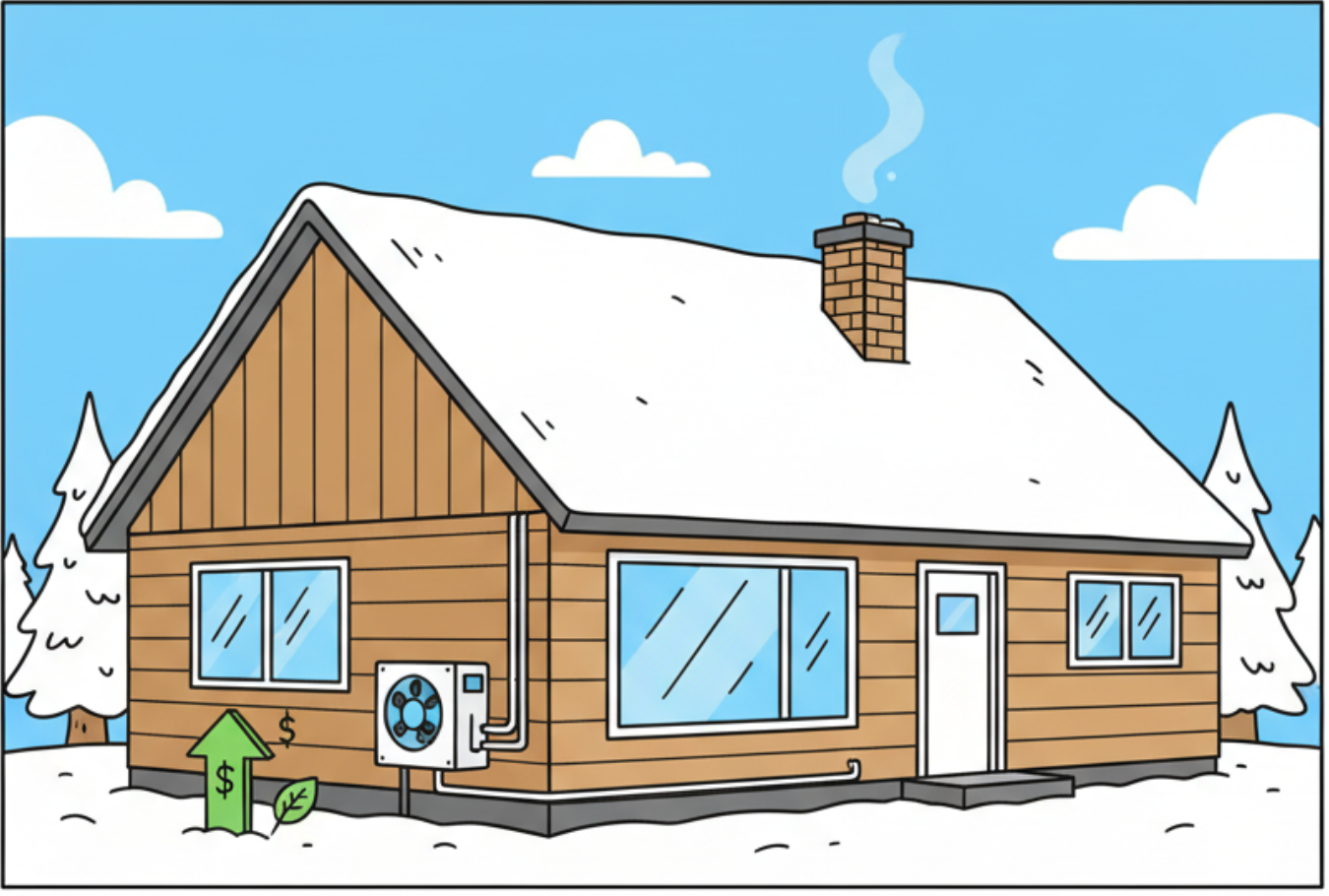My First Year with a Heat Pump: Expectations vs. Reality

When I decided to install a heat pump last year, I had high hopes for energy savings and environmental benefits. Now, after a full year of use, I’m ready to share my experiences, insights, and a few surprising discoveries.
The Numbers: Prediction vs. Actual
Using the calculator I built (link), I predicted our annual heating energy consumption would be around 5.6 MWh. Thanks to a milder‑than‑usual winter, our actual consumption came in at 4.9 MWh. That’s almost exactly what I expected, which was reassuring because… well, at least the nerdy spreadsheet I spent way too much time on didn’t lie to me.
Now for the dollars and cents:
- Natural gas (before): ~1,300 m³ per year × $0.40 = ~$520 in fuel + $26 × 12 ($308) in Enbridge fixed charges = $828/year.
- Heat pump (after): Actual ~4.9 MWh × $0.10/kWh = $490/year.
That’s a clean $330 net savings in year one, this is largely due to the fact that I avoided the $308 Enbridge customer charge entirely.
The Mental Adjustment to Using Electricity for Heat
Here’s what the spreadsheets didn’t prepare me for: sticker shock on my electricity bill.
Even though the total cost (hydro + “hypothetical” gas) was the same or cheaper, seeing those higher hydro charges every month made me pause. Like most people, seeing 2 $100 bills felt more normal then a single $200 bill, or in the coldest months a $300 bill 🥵.
I’ve always been strict with the thermostat, but with the switch to an all‑electric system, I found myself hyper‑aware of every kWh. The reality though? ~50% of my heating load came in just three months (Dec–Feb). If I had better internalized that upfront (and maybe broken down the total estimated usage by month), I would’ve worried less and stressed less about the power bills.
If mental “bill spikes” bother you, I think equal billing programs are a great option — smooth those seasonal bumps, and you’ll feel way less like something’s gone horribly wrong.
Ability to Optimize
Once the nerves wore off, something important clicked: heat pumps give you different levers to optimize than gas furnaces. Their efficiency changes with outdoor temperature, which means you can tilt the math in your favor.
Some lessons learned:
- Temperature setbacks: With a gas furnace, dropping the thermostat at night makes sense because the furnace reheats at the same efficiency. But with heat pumps, small setbacks work better. Large setbacks risk kicking on resistive backup heat, which is way less efficient.
- Weather scheduling: Shifting your heating set‑points to match the daily warm‑up (after sunrise in winter) can improve your average COP significantly.
- Comfort tradeoffs: By adjusting the backup heat threshold, you can decide whether to “ride out” colder snaps without gas or resistive strips. In Ottawa, I found skipping backup heat on typical 1% lows meant I never needed to use my aux heat and it saved me hundreds of kWhs.
The Domino Effect of Electrification
Here’s the funny thing: once you electrify heating, you start noticing everything else.
- Induction stoves: An induction cooktop heats your pot or pan directly using a magnetic field. That means ~85–90% of the energy ends up in the food vs. ~30–40% for gas. Translation: your pasta water boils faster, you’re not dumping waste heat into your kitchen in the summer, and you cut indoor air pollution at the same time.
- Ventless dryers: Old‑school dryers literally blow your conditioned indoor air right out the side of your house (meaning you pay to re‑heat or re‑cool fresh air that replaces it). A ventless heat‑pump dryer, on the other hand, keeps the air circulating in a closed loop. More efficient, gentler on your clothes, and no giant hole in your wall sucking money outdoors.
- EVs: Driving on electricity costs a fraction per km compared to fueling with gas, especially if you charge overnight on off‑peak rates. At Ontario rates, we’re talking ~3¢/km versus 12–15¢/km for a reasonably efficient gas vehicle. And if you’ve already ditched natural gas and shifted your whole household mindset to electricity, plugging in a car instead of visiting the pump just feels like the natural next step.
The heat pump was the gateway drug to electrification — once you track energy consumption closely and realize how manageable it is, every appliance replacement starts pointing in the same direction.
Conclusion
I don’t want to get too hippy‑dippy but… switching to a heat pump is as much a mental adjustment as a financial one.
Yes, you’ll get some bill‑sticker shock. Yes, the heating “feels different,” and you’ll spend a few weeks obsessing over COP charts. But after a year, here’s where I landed:
- My home is warm.
- My costs dropped by ~$330.
- I cut an Enbridge bill out of my life permanently.
And maybe the biggest bonus? Once you take this first step, the rest of the electrification puzzle — stove, dryer, EV — all starts falling into place. It’s not just about heating anymore. It’s about setting up a future where my energy is cheaper, simpler, and cleaner.
TL;DR: Year one with a heat pump: $330 saved, gas cut entirely, mental habits reset. Upfront worry aside, the system works — and it’s a domino effect worth starting.
